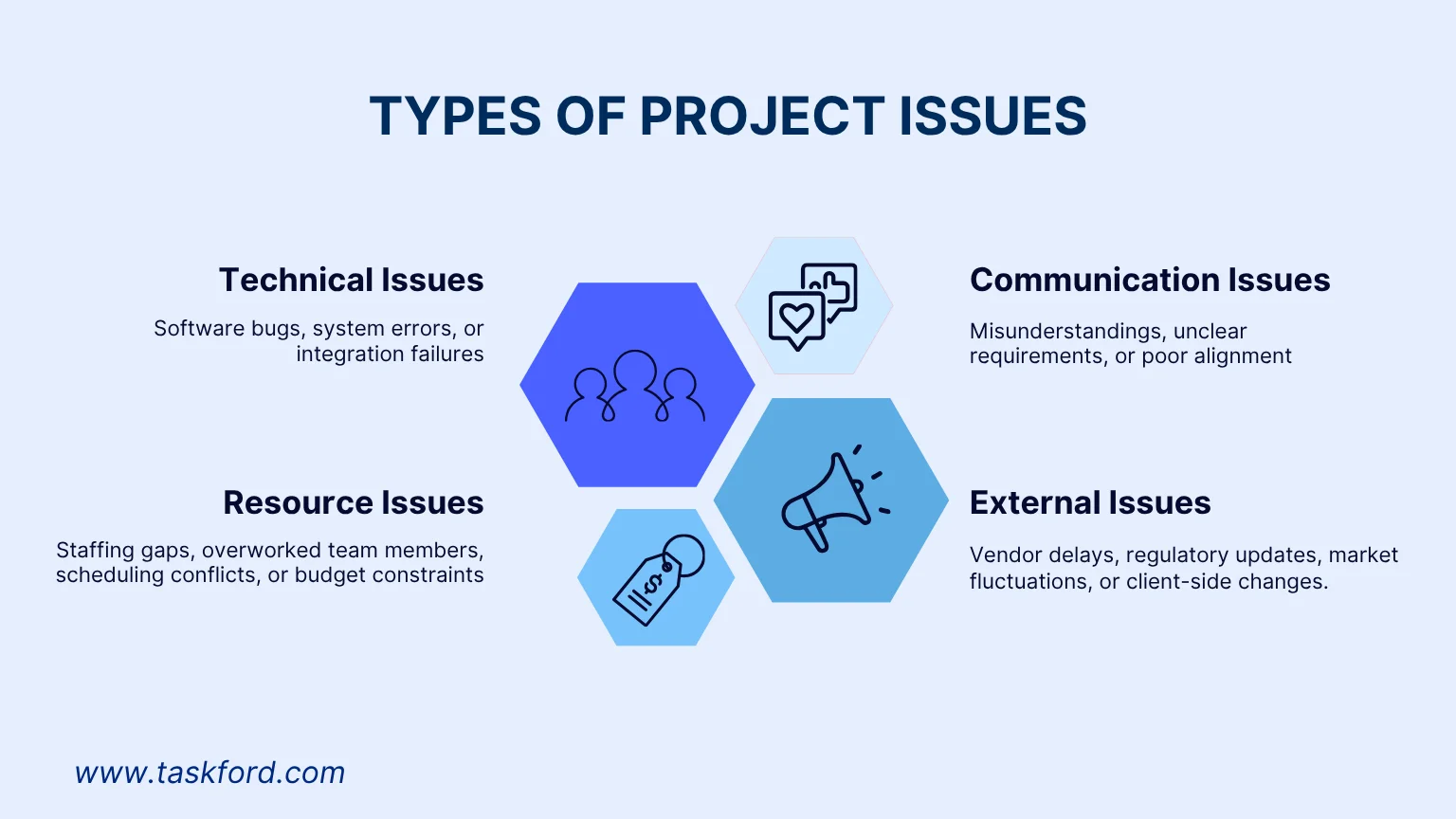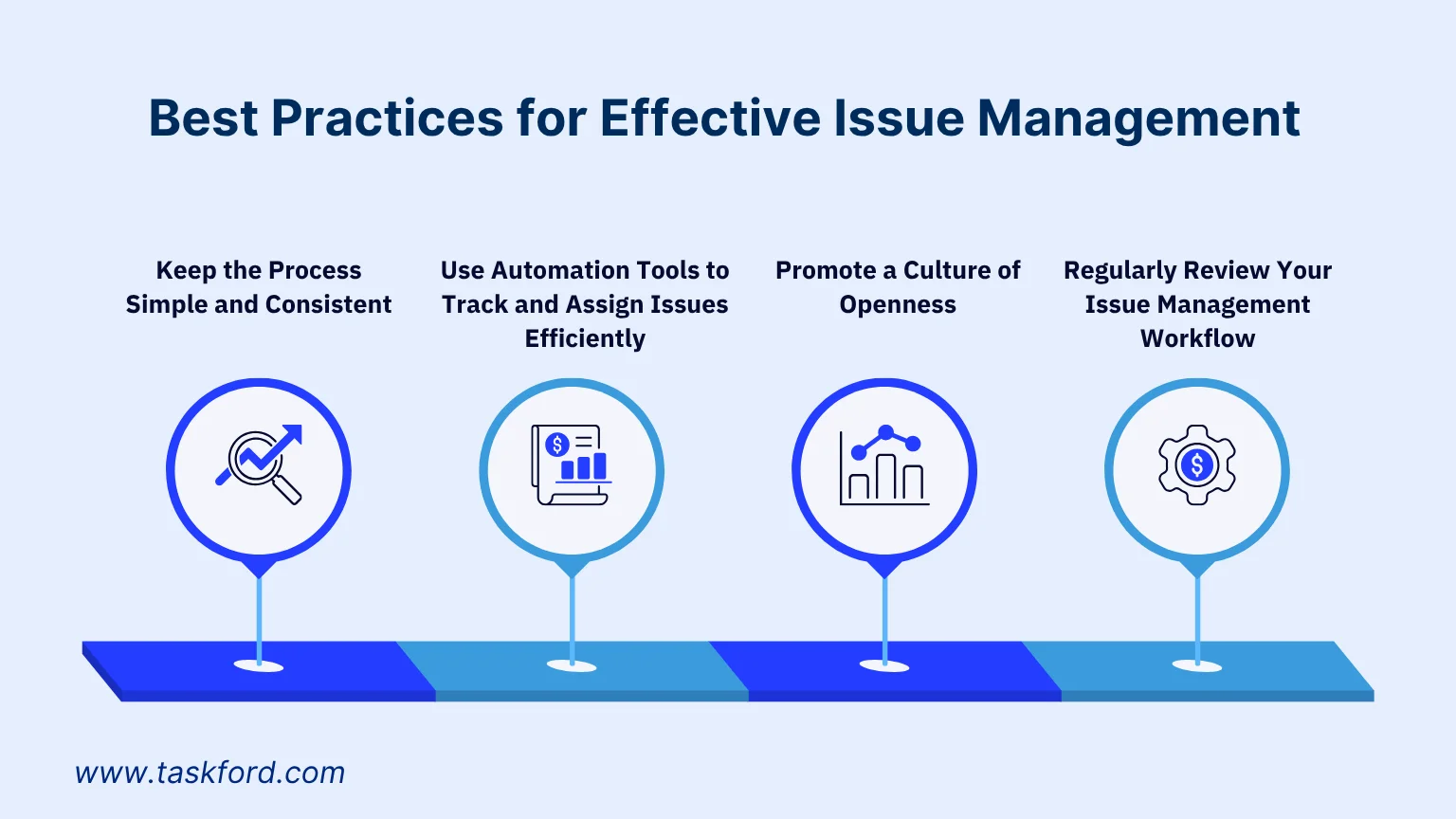7 Proven Steps to Build an Issue Management Process That Actually Works
Explore 7 proven steps to build an effective issue management process that actually works from practical, repeatable, and easy to implement.
Issue Management is one of the most critical processes in successful project delivery. No matter how well a project is planned, unexpected problems — from technical errors and resource shortages to communication breakdowns — can arise at any stage. Without a clear way to manage them, even minor issues can escalate into major roadblocks that derail timelines, budgets, and team morale.
For project managers, having a structured process to identify, document, and resolve issues isn’t just a best practice; it’s a necessity. A well-defined process not only keeps your team aligned but also ensures transparency, accountability, and continuous improvement across all project stages.
In this guide, we’ll share 7 proven steps to build an Issue Management Process that actually works (practical, repeatable, and easy to implement). Whether you’re managing a small internal project or leading a complex cross-functional initiative, these steps will help you stay proactive and in control from start to finish.
What Is Issue Management?
Every project, no matter how well planned, encounters challenges along the way. Issue Management is the structured process of identifying, documenting, tracking, and resolving problems that arise during a project lifecycle. It ensures that when issues appear, whether big or small, they are handled systematically instead of reactively.
At its core, an Issue Management Process helps project managers maintain control and visibility. It allows teams to capture issues in real time, assess their impact, assign ownership, and monitor progress until resolution. The goal isn’t just to fix problems as they happen, but to build a consistent framework that improves how a team responds to obstacles over time.
Types of Project Issues

Not all issues are created equal. Understanding the types of issues you might face helps you categorize and prioritize them effectively within your** **process.
- Technical Issues: These include software bugs, system errors, or integration failures that disrupt workflows or deliverables.
- Resource Issues: Challenges such as staffing gaps, overworked team members, scheduling conflicts, or budget constraints.
- Communication Issues: Misunderstandings, unclear requirements, or poor alignment between teams and stakeholders that slow down progress.
- External Issues: Factors outside the project team’s control, such as vendor delays, regulatory updates, market fluctuations, or client-side changes.
Recognizing these issue types early enables project managers to respond quickly and prevent ripple effects across the project.
Why Issue Management Is Important
A strong Issue Management Process is essential to project success. It does more than resolve problems; it creates a culture of accountability, transparency, and continuous improvement.
- Prevents small problems from becoming project blockers: Early identification and structured tracking keep minor issues from escalating into major disruptions.
- Promotes accountability and transparency: Assigning ownership ensures every issue is actively managed, with progress visible to all stakeholders.
- Enhances communication and decision-making: Clear documentation helps teams collaborate effectively and make informed decisions.
- Improves overall project delivery and stakeholder satisfaction: When issues are handled efficiently, teams stay focused, deadlines are met, and client trust is strengthened.
An empirical study analyzing 881 small building construction projects and over 5,236 individual issues found that teams with structured issue management practices saw a 3.1% to 4.3% reduction in cost growth and a 5.3% to 12.3% reduction in schedule delays (ResearchGate). The study also found that early detection and resolution of issues — particularly in the early stages of a project — were key factors in achieving these improvements.
This evidence underscores the power of a well-defined Issue Management Process: early issue identification, efficient tracking, and timely resolution help keep projects within budget and on schedule, ultimately driving better project delivery and enhanced stakeholder satisfaction.
7 Proven Steps to Create an Issue Management Process
Building an effective Issue Management Process requires more than just identifying and resolving problems; it’s about establishing a repeatable system that promotes consistency, accountability, and continuous improvement.

Below are seven proven steps to help project managers create a process that actually works.
Step 1 – Create an Issue Log
The first step in any successful Issue Management Process is to create an issue log, a centralized space where all project issues are documented and tracked. Your log should include key details such as:
- Issue ID or reference number
- Date identified
- Description of the issue
- Priority level (critical, high, medium, low)
- Assigned owner
- Current status and resolution notes
A well-maintained issue log gives project managers complete visibility into all open issues and ensures nothing slips through the cracks.
Step 2: Identify and Capture Issues Early
Early detection is key to effective Issue Management. Encourage all team members to report potential issues as soon as they notice them, whether it’s a technical glitch, a scope change, or a missed dependency.
Establish clear reporting channels, such as weekly project reviews, dedicated Slack channels, or direct logging in your project management tool.
The earlier you identify an issue, the easier it is to minimize its impact on project schedules and deliverables.
Step 3: Assess and Prioritize the Issue
Not all issues carry the same weight. Once an issue is logged, the next step is to assess its severity and impact on project objectives.
Ask key questions such as:
- How does this issue affect the project timeline or deliverables?
- Does it pose a risk to client satisfaction or quality?
- What resources are needed to resolve it?
Categorize issues as critical, high, medium, or low priority, and use these rankings for effective resource allocation.
This structured prioritization helps project managers focus their attention on what matters most.
Step 4: Assign Responsibility
Every issue needs a clear owner. Assigning responsibility ensures accountability and keeps progress moving.
The issue owner should be the person best equipped to investigate and resolve the problem, whether that’s a developer, designer, or project coordinator. In larger teams, you may also assign a reviewer to validate the fix and confirm closure.
Step 5: Develop an Action Plan
Once ownership is assigned, the next step is to create an action plan for resolution. The action plan should include:
- Defined steps to fix or mitigate the issue
- A timeline for completion
- Allocated resources (people, tools, budget)
- Communication points for stakeholder updates
Keep the plan clear and realistic. Avoid overcomplicating it, the goal is to move from identification to resolution efficiently.
Step 6: Track Progress and Communicate Updates
Monitoring progress is just as important as taking action. Regularly update the issue’s status in your log and hold brief check-ins to ensure the resolution plan stays on track.
Use project tracking dashboards or automated notifications to keep everyone informed. Transparent communication prevents confusion, aligns expectations, and builds trust among project stakeholders.
Step 7: Close and Review the Issue
Once an issue is resolved, it’s essential to formally close it out. Confirm that the problem is fixed, all actions are complete, and documentation is updated.
Conduct a quick review session to identify lessons learned — what caused the issue, how it was handled, and how similar problems can be prevented in the future.
This reflection step transforms one-time fixes into long-term process improvements. Over time, regularly reviewing closed issues helps strengthen your overall Issue Management Process and promotes a culture of continuous learning.
Best Practices for Effective Issue Management
Building a strong issue management process doesn’t stop at creating steps — it’s about continuously improving how your team identifies, tracks, and resolves issues. By following a few proven best practices, project managers can make their process more efficient, transparent, and adaptable to changing project needs.

1. Keep the Process Simple and Consistent
An overly complex process can discourage team members from reporting issues or following through. Keep your issue management process clear, structured, and easy to understand. Everyone involved, from team members to stakeholders, should know exactly how to log an issue, who to assign it to, and how progress is tracked. Simplicity encourages adoption, while consistency ensures accuracy and reliability.
2. Use Automation Tools to Track and Assign Issues Efficiently
Automation saves time and reduces human error in issue management. Instead of manually updating spreadsheets or sending endless email reminders, use digital tools that automatically assign, track, and notify team members about issue progress.
Platforms like TaskFord streamline these tasks by providing real-time dashboards, automated alerts, and centralized tracking, helping project managers maintain visibility and control at every stage.
3. Promote a Culture of Openness
Effective issue management starts with honest communication. Encourage your team to report potential issues early, without fear of blame or criticism.
When team members feel comfortable raising concerns, issues are identified sooner, solutions come faster, and the overall project atmosphere becomes more collaborative and transparent.
4. Regularly Review Your Issue Management Workflow for Improvement
Your issue management process should evolve with your projects. Schedule regular reviews, after key project milestones or project completion, to evaluate what worked well and what needs refinement.
Analyzing recurring issues, bottlenecks, and response times helps project managers fine-tune their approach and continuously improve future project outcomes.
Conclusion
An effective issue management process isn’t just about fixing problems; it’s about building a structured, proactive system that keeps your projects moving forward smoothly. By following these seven proven steps, project managers can create a process that identifies issues early, assigns clear ownership, tracks progress transparently, and ensures every problem is resolved efficiently.
Combining these steps with a few key best practices helps teams stay agile and focused even when challenges arise. When your issue management process works seamlessly, your projects benefit from stronger collaboration, improved decision-making, and greater stakeholder confidence.
Subscribe for Expert Tips
Unlock expert insights and stay ahead with TaskFord. Sign up now to receive valuable tips, strategies, and updates directly in your inbox.